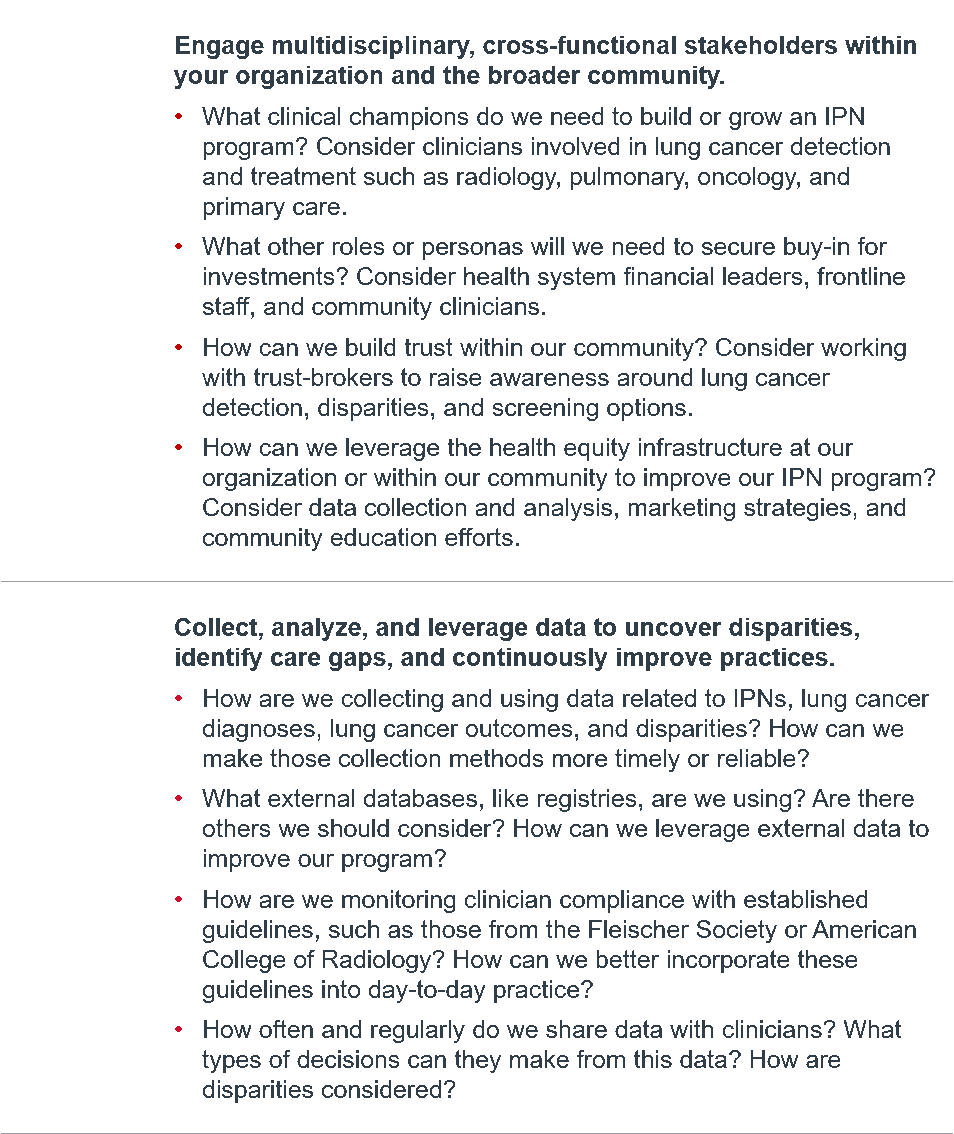Lung cancer remains the deadliest cancer in the United States. Health disparities and inequity place an even greater disease burden on certain populations with factors including race, gender, and socioeconomic status impacting both lung cancer incidence and death.
Living in a lower socioeconomic area increases a person’s likelihood of having lung cancer. Lung cancer incidence is more than 30% higher in rural counties where at least 20% of the population lives below poverty compared to similar counties with less than 10% of the population below poverty according to a study published in 2018 (Table 1). Disparities also persist within race and gender. Black men are most likely to die of lung cancer, with a mortality rate nearly 20% higher than men from all other races in a study published in 2019 (Table 2).
Lung cancer survival rate depends heavily on stage at diagnosis. Patients diagnosed at early stages, when the lung cancer is still localized, have a five-year survival rate of nearly 57%. However, that rate drops to 31% for regional stages, and just 7% for distant stages.
We can’t over-rely on lung cancer screening
Lung cancer screening via low-dose CT (LDCT) offers a common pathway to early diagnosis. Unfortunately, lung cancer screening rates remain significantly lower compared to other cancer screenings. An estimated 14% of eligible patients received the recommended LDCT screening exam versus 66% for breast cancer screenings and 69% for colorectal cancer screenings.
Screening rates may increase as nearly double the number of Americans are eligible for LDCT lung cancer screening thanks to revised guidelines released by the United States Preventive Services Task Force (USPSTF) in March 2021. The most dramatic increases are among populations with the highest lung cancer mortality and/or those at the highest risk for lung cancer at younger ages, that is, female, Black, and Hispanic patients.
However, a plethora of challenges keep screening rates low, from individual concerns like radiation exposure to societal barriers like the stigma that accompanies smoking.
Based on Advisory Board’s research, we believe the industry should absolutely continue pushing to increase screening rates. We understand that it will be extremely difficult to advance equity relying on screening alone. Fortunately, another approach exists that may bypass some of the common barriers to screening.
Enter incidental pulmonary nodule (IPN) findings
Incidental findings are abnormalities uncovered unintentionally and unrelated to the condition that prompted an exam. Pulmonary nodules are abnormal growths that form in a lung. They can be identified on imagining scans. Most pulmonary nodules are benign, but some indicate the presence of lung cancer.
As an example: a patient visits the emergency department (ED) after a fall where the ED provider orders a chest X-ray to check for fractured ribs. While reading the scan, the radiologist finds an IPN and informs the ordering provider, who in turn notifies the patient and helps coordinate follow-up care.
If managed correctly, incidental findings may allow more patients with lung cancer to be diagnosed at earlier stages, providing another opportunity to improve survival. For example, one organization found that of all patients with lung nodules, 80% of cases were detected incidentally versus 20% from routine lung cancer screenings. In other words, incidental findings resulted in the detection of four times as many patients with lung nodules than relying on screening alone. Of the total patients, about 15% were diagnosed with lung cancer with 94% of those cases being Stage I or II.
How can IPNs reduce disparities?
Effective finding and management of incidental pulmonary nodules can bypass some common barriers to lung cancer screening that contribute to health disparities.
This answer isn’t perfect.
IPN programs may help ease some barriers to lung cancer detection, but there are further challenges that contribute to disparities that this option does not address:
- Complications that come through follow-up including making an appointment, having nearby providers in your community, and transportation to appointments
- Costs of care for patients without adequate insurance coverage or financial means
- Trust in the health care system overall and in individual providers
Finally, IPN management requires additional resources, clinician education, and staff to ensure patients don’t slip through care gaps. Leaders may struggle to capture their executives’ attention or secure enough funding for a robust IPN program right away. However, there are steps you can take to get started in the right direction.
Advisory Board’s guidance and next steps

Click here to download this article in PDF format.
In Partnership with the Lung Ambition Alliance
The Lung Ambition Alliance, a global coalition with partners across disciplines in over 50 countries, was formed to combat lung cancer through accelerating innovation and driving forward meaningful improvements for people with lung cancer. We do this by advocating for improved approaches in three areas: screening and early diagnosis, accelerated delivery of innovative medicine, and improved quality care.
This report is sponsored by AstraZeneca, an Advisory Board member organization. Representatives of AstraZeneca helped select the topics and issues addressed. Advisory Board experts wrote the report, maintained final editorial approval, and conducted the underlying research independently and objectively. Advisory Board does not endorse any company, organization, product or brand mentioned herein.
To learn more, view our editorial guidelines.

Don't miss out on the latest Advisory Board insights
Create your free account to access 2 resources each month, including the latest research and webinars.
Want access without creating an account?
You have 2 free members-only resources remaining this month remaining this month.
1 free members-only resources remaining this month
1 free members-only resources remaining this month
You've reached your limit of free monthly insights
Become a member to access all of Advisory Board's resources, events, and experts
Never miss out on the latest innovative health care content tailored to you.
Benefits include:
You've reached your limit of free monthly insights



